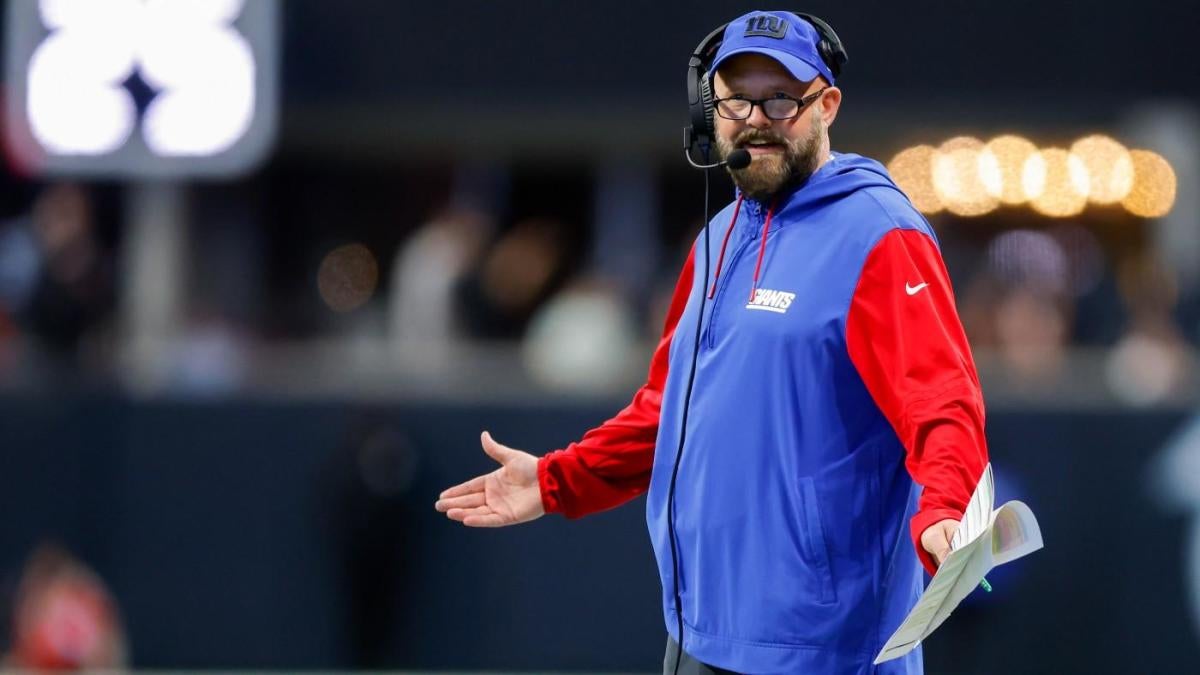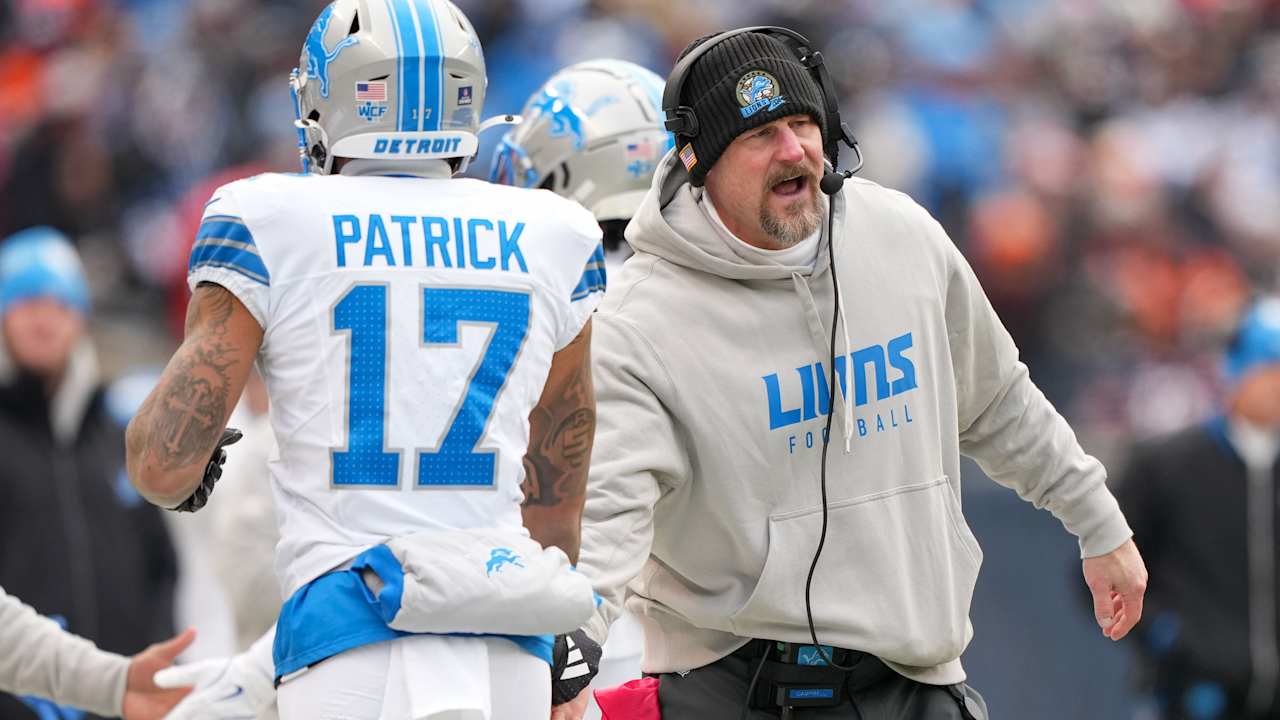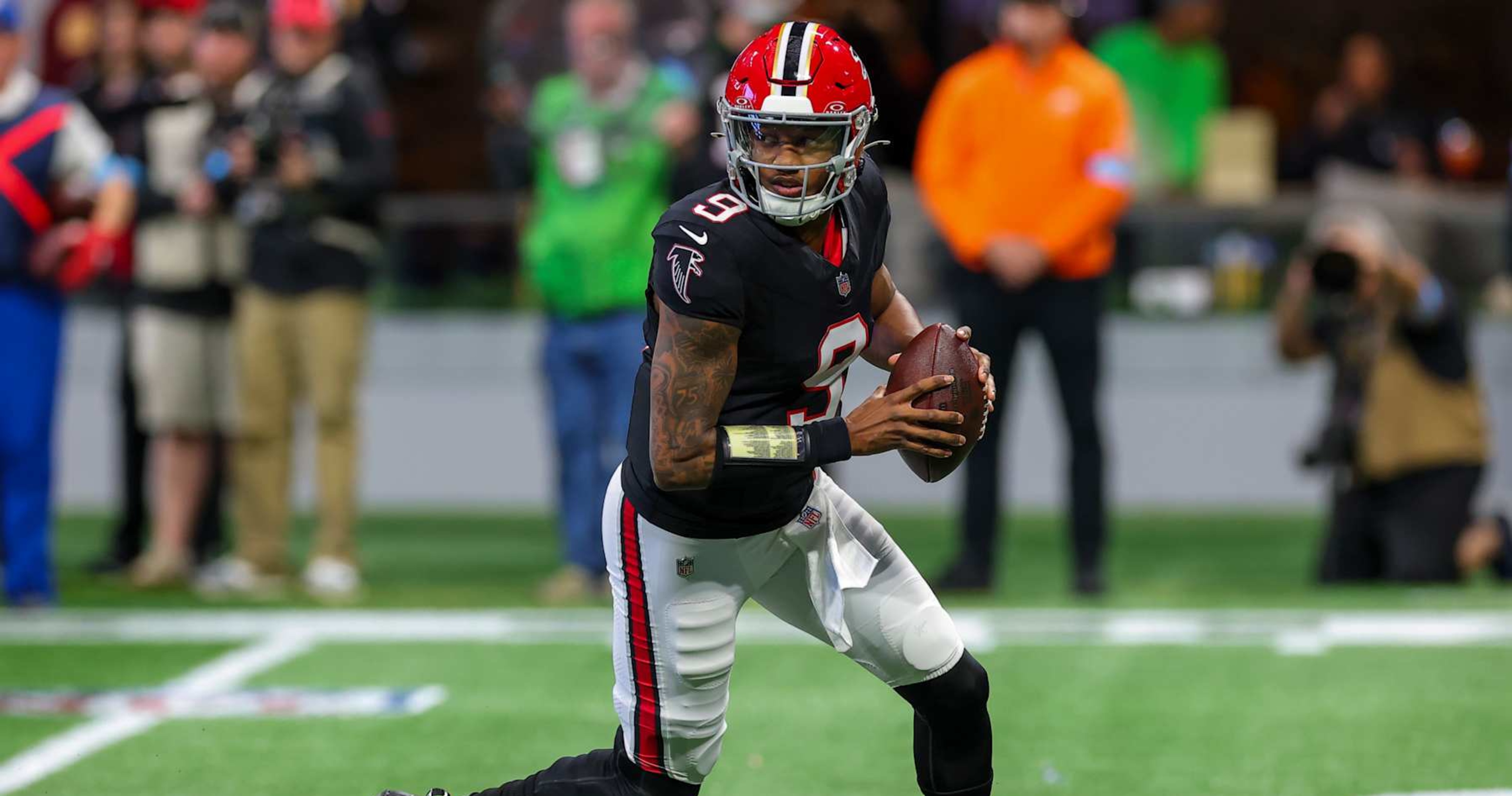Tennis
Darwin Blanch: The American tennis phenom nowhere to be seen at the U.S. Open

This article is part of The Next Generation series. As the greats, such as Roger Federer, Serena Williams and Rafael Nadal, become the past and Carlos Alcaraz and Iga Swiatek handle the present, The Athletic explores the next generation: the rising stars who will be tasked with securing tennis’ future.
For more than a year now, his name has been on the tongues of all the truly in-the-know tennis folks.
In this world, newcomers such as Jakub Mensik and Dino Prizmic — 18- and 19-year-old tour rookies unheard-of to most, who have notched some early wins and frightened the world with lightning forehands and thighs as big as tree trunks — are already very old news.
Mirra Andreeva, 17 and on her second-go-round in Grand Slams, is so 2023.
Music has snobs who scoff at anyone who tries to float the name of a band that have actually released music with a label. Tennis has snobs who for months have wanted to talk about little other than an American teenager, trained in Spain, named Darwin Blanch.
Yeah, that Darwin Blanch — the one a compromised Rafael Nadal took apart in 13 games in Madrid in April. The world No. 911.
GO DEEPER
Rafael Nadal keeps Darwin Blanch — and injury — at arm’s length in Madrid
He’s the boy that Carlos Alcaraz sometimes hits with when they are both training at the Juan Carlos Ferrero Tennis Academy in Alicante. He’s the one for whom Rick Macci, the guy who helped mold the Williams sisters, Jennifer Capriati and Andy Roddick, reserves the loftiest language.
He talks about programming Blanch with an ATP-style forehand as a toddler. “That left hand, it’s like there was magic in a bottle,” Macci said of Blanch one morning earlier this year at his training center in Boca Raton, Florida.
“He doesn’t hope to be great. He expects to be great.”

Blanch was outclassed by Nadal in Madrid. (Miguel Reis / SOPA Images/LightRocket via Getty Images)
Blanch’s father, Ernesto, has already raised two other sons who were top juniors but have struggled to break through on the pro tour (Dali, current ranking 669; Ulises, current ranking 681), as well as a daughter, Krystal, who is a college player.
He insists Darwin is different.
“From age three, he never watched cartoons, only tennis,” Ernesto said of his youngest boy that morning in Florida, as Darwin watched Dali practice on one of Macci’s courts.
Lindsay Davenport, the former world No. 1 who coaches the U.S. Billie Jean King Cup team, and her husband, the former pro Jon Leach, have a tennis-playing son, Jagger, who is the same age as Blanch. She’s known him for a while. Jagger and Blanch played the Junior Davis Cup together last year.
Davenport liked what she saw, and told her friend Mary Carillo about Blanch. The former pro and tennis commentator told her buddies on the Tennis Podcast. Since then, Blanch has been out there — as one of the special ones, even the special one.
“The next great American talent,” Macci said.
At the 2024 U.S. Open however, Blanch is nowhere to be found.
Wait. ‘The next great American talent’? Wasn’t that Frances Tiafoe, or Taylor Fritz, two of the semifinalists here in New York? What about Sebastian Korda? Is Ben Shelton, a U.S. Open semifinalist himself in 2023, over already?
This is what tennis does, and never more so than now.
Thirty years ago, it was pretty clear where the standard for phenom stood. Her name was Monica Seles. She’d won eight Grand Slam titles by the time she was 19. The sport was different then. Not as physical, not nearly as many countries producing elite players. Still, that’s a true phenom, the likes of which won’t be seen again.
This is the era of TikTok and YouTube videos of the eight-year-old with the killer serve; of the 13-year-old who plays with two forehands who will change the sport; of a searching for the future of a future that hasn’t even happened yet. Alcaraz, 21, and Jannik Sinner, 23, are Grand Slam champions and top of the world rankings, but still varying distances away from their full flowering. Somehow, their destiny is already spoken about as achieved. Now we need to move on to… Next.

GO DEEPER
Tennis usually passes the torch. Carlos Alcaraz is running away with it
Sometimes, greatness predictions work out. Nadal might have been a favorite to win the French Open in 2004, a year before his breakout triumph at 19, had an injury not prevented him from playing in Paris. A decade-and-a-half later, there was no shortage of buzz about Alcaraz — “the next Rafa”.
Coco Gauff was so beyond her peers physically that she made the finals of the U.S. Open Juniors when she was 13. When she beat Venus Williams on Centre Court at Wimbledon at 15 and the wider sporting public went bananas, the tennis chatterati reacted with both exuberance and a collective, “duh!”.
Sometimes, though, it all goes very sideways.
Donald Young, a world junior No. 1, a lefty (so is Blanch), and the next great American talent not so long ago, never got higher than No. 39 in the rankings. He lost 17 consecutive matches in 2012 and never recovered. He’s still only 35.
Young is at the U.S. Open, playing what was supposed to be a ceremonial kind of mixed doubles exhibition that happens to also be a competition, with Taylor Townsend. They reached the mixed doubles semifinals here in 2014. Young has been a huge figure in American tennis behind the scenes, formative in the career of Chris Eubanks as well as Townsend herself, but never made the deep Grand Slam run that seemed part of his destiny when he was just a kid.
In a sweet end to his playing career, he and Townsend made the final, but lost to Italians Sara Errani and Andrea Vavassori.

Young’s last major appearance was at the 2018 U.S. Open, where he lost to Juan Martin del Potro in round one. (Eduardo Munoz Alvarez / AFP via Getty Images)
It is blessedly too early to tell where Blanch will fit into all of this, but one thing is clear. He, his father and the rest of his team have decided that his junior career is over. His father said he won’t even play junior Grand Slam tournaments anymore after making the semifinals of the boys’ singles at Wimbledon last year.
“What are the juniors going to add? Nothing,” Ernesto said. “What are the pros going to add? A lot. They pull his level up. The juniors, the first three or four rounds are nothing.”
He isn’t playing any pro Grand Slams, either.
Tournaments on the second and third tiers of the sport — Challengers and ITF events — dominate his schedule at the moment. He did get his first taste of the top level in March in Miami and the following month in Madrid. His management company, IMG, a sports and entertainment conglomerate, owns both those tournaments. It gave Blanch one of its coveted wild card entries at each event.
He lost to Czech Tomas Machac, 6-4, 6-2, in Miami. Nadal beat him 6-1, 6-0 in Madrid. In each case, the visual matched the demographic math. This was a lanky, 6ft 3in (190.5cm) high-school boy, still years away from achieving a five-o’clock shadow, taking on fully-formed men.
“To get to the pro level, this is what I have to go through,” he said after that hammering from Nadal.
The biggest lesson from the experiences, he said, was the danger of any mental lapses.
“You have to be there for every point,” he said. “If you leave for a second, the match is over.”
Forget any possible hoo-ha about favoritism and management rigging of wildcards if Blanch had been given a wildcard to Flushing Meadows. It would have been bad enough on the court, and he knows it. He isn’t ready to be there, and that’s fine.
Beyond his physical gifts, being around tennis has been Blanch’s secret sauce ever since he could walk.
He may have even begun to absorb some lessons in utero. Ernesto said his mother went into labor while watching her other son practice in Florida.
Blanch has known little else but tennis. Ernesto, a former collegiate skier, comes from an athletic family. He never had any doubt about raising his children to be athletes. An international businessman based in Thailand, he has worked for Coca-Cola and consumer goods corporation P&G, and has a software company in the U.S. state of Washington. He also spent long stints in Florida and Argentina, where the opportunities for tennis development are far better than they are in greater Bangkok.
Though he is Spanish, and the mother of his children is from the Caribbean, all four of them were born in the United States or Puerto Rico, a U.S. territory in the Caribbean. Darwin and Krystal largely grew up with Ernesto and his current wife.
Blanch grew up watching his older siblings practice. A natural lefty, he started whacking a ball himself when he was a toddler. He started getting lessons from Macci, who was coaching his siblings, too, at age six.
Macci usually gets kids when they are a little older, after their first instructors have let them go a few years swinging a racket like a baseball bat and serving like they are pitching in that same sport. Then he has to make them unlearn all that, and instead master the wonky, semi-western grip and specific swing patterns that will allow them to compete at the high levels. Blanch, on the other hand, got trained with professional habits from the beginning.
“I never spent more time with a young kid,” Macci said. His serve is going to be near Shelton’s, suggested Macci, who also predicted Blanch will have the most lethal inside-out forehand in the sport before too long.
If all of this sounds dangerously effusive, it should, but Blanch was naturally competitive and passionate about tennis. He simply loved being out on a court and always appeared so focused on improving, and then winning.
“One hour on the court when he was three was like three hours for someone else,” Ernesto said, still dumbfounded by it all. “Never wasting one second. He was crying if it rained and he had to go home. It was really crazy.”
Maybe it’s a younger sibling thing, kids growing up wanting to outdo the older ones. Serena Williams is younger than sister Venus. Naomi Osaka is younger than Mari. Alexander Zverev is younger than Mischa. Then again, Patrick McEnroe is younger than John, so it’s not exactly science.
Blanch spent 2021 at the USTA training center in Orlando, Florida, but joined his older brothers at the Ferrero Academy in Spain the next year. That’s where the brothers are when they aren’t playing tournaments.
Despite the chatter, Blanch is still growing up in a family in which his accomplishments have yet to outdo his brothers. They won trophies at the Orange Bowl, the prestigious junior tournament in Los Angeles, like he has. They got as high as he did in the ITF rankings, and they have made junior Grand Slam semifinals too. His father doesn’t bother to tell his extended family about Blanch’s latest exploits, because there is a been-there-done-that quality to them.

Blanch will be hoping for success at the U.S. Open, via a wildcard. (Al Bello / Getty Images)
But he has gotten to where they did at a much younger age. They did not do what he is doing now: feeding himself to the wolves at 16 and hoping not to get eaten. “Challengers is going to be the next step for me,” he said in an interview after the Nadal loss, which he described as a great learning experience.
He’s 13-14 this year, and 4-6 since the Nadal loss. In July, he reached the final of a low third-tier ITF tournament in Monastir, Tunisia, losing to Eliakim Coulibaly of the Ivory Coast 2-6, 2-6. “The result is not important right now,” he said. “Just learn.”
Now the question is whether the sport lets him do it, or whether the demands of becoming another phenom end up damaging him the way they have damaged others before.
As his future becomes his past, it stays with him, as it does for everyone, and not always for the best.
“All of us labor in webs spun long before we were born, webs of heredity and environment, of desire and consequence, of history and eternity,” a good writer named William Faulkner once observed.
He wasn’t really talking about tennis. Or was he?
(Top photo: Getty Images; Design: Ray Orr)
The Next Generation series is part of a partnership with CHANEL.
The Athletic maintains full editorial independence. Partners have no control over or input into the reporting or editing process and do not review stories before publication.










